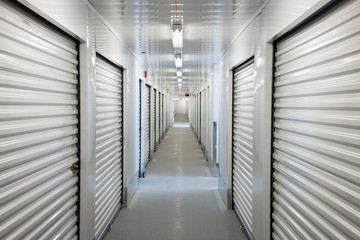If you collect valuable antiques and own an envious wine collection, or just want to store upholstered furniture, photographs and electronics, you need climate-controlled self storage.
The consistent temperatures of a climate-controlled storage unit will protect your belongings from damage and deterioration.
High temperature and humidity levels can warp, crack or split wood or leather furniture. High humidity levels can create moisture in electronics, books and textiles, and this moisture leads to damaging mold and mildew. Fluctuating temperatures can permanently damage electronics, medical or pharmaceutical supplies and retail inventory.

What is Climate-Controlled Storage?
Climate-controlled storage is an additional option offered by many self-storage facilities. These units maintain a consistent temperature no matter what the season. While these options may be more expensive, they can offer peace of mind when storing certain valuables.
Climate-control keeps a unit’s indoor temperature between 55° F and 85° F and maintains a humidity level of 55%. As a comparison, the average air-conditioned home stays between 35% and 45% humidity. Think of climate control as an air-conditioner, humidifier, and dehumidifier combination to maintain the proper temperature and humidity levels for specific types of items.
Be aware that there is a difference between temperature control and climate control. Some facilities offer temperature control, which only manages the temperature. Climate control manages temperature and humidity to control moisture levels.
Climate-controlled self storage can be a lifesaver If you’re storing in an area that has extreme heat and humidity during the summer months, extreme cold during the winter, or combinations of these conditions throughout the year. To maintain your possessions in ultimate condition, climate-controlled storage is your best bet.
Ask yourself the following questions to determine whether climate-controlled storage is a good fit for you.
Question 1. Does the temperature where you’ll be storing your belongings drop below 32° F or rise above 90° F?
Question 2. Is the facility located in a climate that is subject to high humidity?
Question 3. Do any of your possessions have high monetary or sentimental value?
Question 4. Are you storing for a lengthy period of time?
Question 5. Will you be making frequent visits to your unit, in which case you’ll want comfortable conditions?
If you answered yes to three or more of these questions, you need climate-controlled storage to protect what is important to you.
What Should be Stored in Climate-Controlled Storage?
You may have inherited an antique table from a close relative. You don’t want to use it because it doesn’t blend with your contemporary look, but you certainly don’t want to dispose of it. So, you decide to store it. Against the advice of the storage facility manager, you decide to use storage that is NOT climate controlled because it is less expensive.
A year later you decide that you want to use this beautiful piece. You go to your storage unit to retrieve it and find that there is mildew on the fabric and that the wood trim has swollen and cracked. Climate-controlled storage would have prevented the damage and maintained the original condition of this piece. You can probably locate a similar item, but you can never replace the monetary and sentimental value.
The following list will give you an idea of the types of items that should be in climate-controlled storage:
Artwork and Craft Supplies
Business Documents
Electronics
Golf Clubs
Household Appliances
Leather and Upholstered Furniture
Metals
Musical Instruments
Photographs
Stamp, Coin, and Comic Book Collections
Wine
Wood and Antique Furniture
Vinyl Record Collections
Climate-controlled storage is slightly more expensive, but damaged or destroyed property can be far more costly. Why take the chance when you have an available solution. Talk to your storage professional for details.